These days, people need more options on how to strengthen their immunity and fight against common ailments. For some of our patients, it is a challenge for them to acquire conventional medication especially if they are living in Geographically Isolated and Disadvantaged Areas (GIDA). These are areas where the commonly found clinics and pharmacies are very scarce if none at all.
Thus, to make sure that those people that are ill have flexibility in their options for medication, we gathered the latest updates regarding 10 Herbal Medicines that are approved by the Department of Health through Republic Act No. 8423 known as the Traditional and Alternative Medicine Act (TAMA) of 1997; this act created the Philippine Institute of Traditional and Alternative Health Care (PITAHC) to further the development of traditional and alternative medicines in the Philippines. We have included in the list their uses, preparation and where it’s commonly found. It will be useful for the patients who have difficulty in accessing commonly sold drugs in the pharmacy.
As Nurses, we have a vital role in reaching out to the people in our communities and provide health education with regards to the importance of these herbal medicines. We should serve as role models to our people in order to empower them by offering alternative sources of medication outside the conventional medicine that is commonly used nowadays.
We should always keep in mind that some patients do not have access to these conventional therapies. Hence, our role is to make sure that they don’t run out of choices. By encouraging the people in our communities to plant these simple herbal medicines in their backyards, it will be of great aid for them in times of need.
Listed below are the 10 Herbal Medicines that are approved by the Department of Health through its Traditional Health Program.
10 Herbal Medicines approved by DOH
1.) Lagundi (Vitex negundo L.)
It is one of the ten herbal medicines endorsed by the Philippine Department of Health as an effective herbal medicine with proven therapeutic value. Studies have shown that Lagundi can prevent the body’s production of leukotrienes, which are released during an asthma attack.
Even in Japan, lagundi is becoming recognized as an effective herbal medicine, especially since researches have shown that it contains properties that make it an expectorant and it has been reported to function as a tonic as well. More than that, most of the parts of the lagundi plant have medicinal value.This medicinal plant had recently been commercialized and many pharmaceutical companies are making cough syrups out of it.
Common names: Dangla (Ilokano); five-leaved chaste tree, horseshoe vitex
Indication: Leaves and flowering tops decoction, syrup, tablets and capsules for
coughs, colds, fever and asthma.
Found in: in humid places or along water courses, in waste places and mixed open
forest
Parts used: Leaves and flowering tops
Special precautions: Make sure to have the five-leaved varieties, as there are
other varieties of lagundi.
Preparation:
Asthma, Cough & Fever
Decoction (the process of boiling the leaves or other parts of a fruit/plant in a couple of glasses of water for 15 minutes) is the most convenient way to use this as a medication.
This plant can also be pounded using a pestle and mortar and can be applied to affected areas where there is pain, or soreness.
For wounds, the decoction can be used as an alternative to hydrogen peroxide for wound dressing.
Headache
Crush leaves may be applied on the forehead
Rheumatism, sprain, contusions, insect bites
-Pound the leaves and apply on affected area
2.) Ulasimang-bato (Peperonia pellucida)
It is a small herb that grows from 1 to 1 1/2 feet. Pansit-pansitan can be found wild onlightly shaded and damp areas such as nooks, walls, yards and even roofs. Pansit-pansitan has heart shaped leaves, succulent stems with tiny flowers on a spike. When matured, the small fruits bear one seed which fall of the ground and propagate. This is a very popular traditional medication for gout as this herbal plant contains analgesic properties.
Gout is the most common type of arthritis for Filipinos, according to the statistics of Philippine Rheumatology Association (PRA), around 1.6M Filipinos are suffering from Gout. It’s no surprise that this herbal medication is starting to become the center of attraction when looking for an alternative to the conventional treatment of gout, like Allopurinol.
Common names: Ulasimang-bato, pansit-pansitan (Tagalog); olasiman-ihalas
(Cebu,Bisaya); tangon-tangon (Bikol); peperonia (English)
Indications: Infusion, decoction or salad for gout and rheumatic pains; pounded
plant warm poultice for boils and abscesses
Found in: In lowland rain forest, thickets, hedges, waste places, and roadsides.
Parts used: aerial plant parts
Special precautions: Avoid using with other pain relievers, diuretics
Preparation:
Lowers uric acid (rheumatism and gout)
– One a half cup leaves are boiled in two glass of water over low fire. Do not cover pot. Divide into 3 parts and drink one part 3 times a day
3.) Guava (Psidium guajava L.)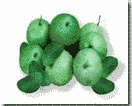 Bayabas or guava is a tropical plant, which is locally known for its edible fruit. In the backyards of Filipino homes in the country, this plant is commonly seen, and grown because of its many uses as fruit and as traditional remedy to treat various ailments. As shown by many research studies, almost all of the parts of this plant have medicinal qualities and value, and thus, making it as one of the most popular therapeutic plants in the Philippines
Bayabas or guava is a tropical plant, which is locally known for its edible fruit. In the backyards of Filipino homes in the country, this plant is commonly seen, and grown because of its many uses as fruit and as traditional remedy to treat various ailments. As shown by many research studies, almost all of the parts of this plant have medicinal qualities and value, and thus, making it as one of the most popular therapeutic plants in the Philippines
Common names: Guava, bayabas (Tagalog); guyabas (Iloko); Guava (English).
Indications: anti-diarrheal and antiseptic
Found in:Common in the Philippines
Parts used:Leaves,fruits
Special precautions:Eating too much guava fruit may cause constipation
Preparation:
For washing wounds
Wash the leaves with running water before boiling it for at least 15 minutes. Wait until the decoction cools down into lukewarm temperature before rinsing the wound with it. Be careful not to use it while it is still hot as it may cause burn.
Diarrhea
– May be taken 3-4 times a day
As gargle and for toothache – Warm decoction is used for gargle. Freshly pounded leaves are used for toothache. Boil chopped leaves for 15 minutes at low fire. Do not cover and then let it cool and strain.
4.)Bawang (Alium sativum L.)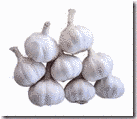 This herb is one of the most widely used herbal medicines in the Philippines and can also be found commonly in the kitchen of Filipino households as it is used to spice up food preparations. The Philippines bawang or garlic variety is more pungent than the imported ones. Its medicinal properties have been known for a long time and have been especially proven during World War II when it was used to treat wounds and infections of soldiers.Garlic antibacterial compound known as allicin, saved many lives of the soldiers as this property prevented the wounds from being infected and developing into gangrene at a later stage by extracting the juice of bawang or garlic and applying to the wounds.
This herb is one of the most widely used herbal medicines in the Philippines and can also be found commonly in the kitchen of Filipino households as it is used to spice up food preparations. The Philippines bawang or garlic variety is more pungent than the imported ones. Its medicinal properties have been known for a long time and have been especially proven during World War II when it was used to treat wounds and infections of soldiers.Garlic antibacterial compound known as allicin, saved many lives of the soldiers as this property prevented the wounds from being infected and developing into gangrene at a later stage by extracting the juice of bawang or garlic and applying to the wounds.
Common names: Ajos (Bisaya); garlic
Indications: Fresh cloves, capsules for lowering blood cholesterol levels;
antiseptic.
Found in: cultivated all over the world. Probably originated from Central Asia
Parts used: Leaves and bulbs (cloves)
Special precautions: Avoid taking with medicines for lowering blood sugar, and
medicines for thinning blood. Dosage must not exceed 6-8 cooked cloves a day.
Stomach ulcer may develop if garlic is eaten raw
Uses & Preparation:
Hypertension
– Maybe fried, roasted, soaked in vinegar for 30 minutes, or blanched in boiled water for 15 minutes. Take 2 pieces 3 times a day after meals.
Toothache
– Pound a small piece and apply to affected area
5.) Yerba Buena (Clinopodium douglasii)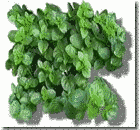
Yerba Buena has been consumed for centuries as tea and herbal medicine as a pain reliever(analgesic). Native American Indians used it even before the “white men” colonized the Americas. Today, this folk medicine’s efficacy has been validated by scientific research. In the Philippines, Yerba Buena is one of the 10 herbs endorsed by the Department of Health(DOH) as an effective alternative medicine for aches and pains.
Common name: Peppermint
Indications and preparations: for pain, cough, colds, nausea, dizziness, and
pruritus
Parts utilized: leaves, sap of plant
Uses & Preparation:
Pain (headache, stomachache)
– Boil chopped leaves in 2 glasses of water for 15 minutes. Divide decoction into 2 parts, drink one part every 3 hours.
Rheumatism, arthritis and headache
– Crush the fresh leaves and squeeze sap. Massage sap on painful parts with eucalyptus
Cough & Cold
– Soak 10 fresh leaves in a glass of hot water, drink as tea. (expectorant)
Swollen gums
– Steep 6 g. of fresh plant in a glass of boiling water for 30 minutes. Use as a gargle solution
Toothache
– Cut fresh plant and squeeze sap. Soak a piece of cotton in the sap and insert this in aching tooth cavity
Gas pain
– Soak a handful of leaves in a lass of boiling water. Drink infusion.
Nausea & Fainting
– Crush leaves and apply at nostrils of patients
Insect bites
– Crush leaves and apply juice on affected area or pound leaves until like a paste, rub on affected area
Pruritis
– Boil plant alone or with eucalyptus in water. Use decoction as a wash on affected area.
6.) Sambong (Blumea balsamifera L. DC)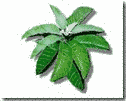
Sabong is an amazing medical plant. Coming from the family of Compositae, it goes by several names locally. It is known in the Visayas as bukadkad and as subsud in ilocos. This plant possesses a multitude of properties that make it worthy of the DOH approval.
Common names: Sambong (Tagalog); lakad-bulan (Bikol); Ngai camphor (English)
Indications: Diuretic in hypertension; dissolves kidney stones
Found in: In roadsides, fields, lowland and mountainous regions
Parts used: Leaves and flowering tops
Special precautions: Avoid using with other diuretics. When taking diuretics, eat at
least one banana a day.
7.) Akapulko (Cassia alata L.)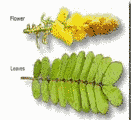 Akapulko is a shrub found throughout the Philippines. It is known under various names in different regions in the country.
Akapulko is a shrub found throughout the Philippines. It is known under various names in different regions in the country.
Common names: Katanda (Tagalog); andadasi (Ilokano);palochina (Bisaya);
ringworm bush,seven golden candlesticks, bayabas-bayabasan
Found in: Abundantly naturalized in South East Asia, and occasionally planted
throughout the region for medicinal and ornamental purposes
Parts used: Leaves
Preparation:
Anti-fungal (tinea flava, ringworm, athlete’s foot and scabies)
– Fresh, matured leaves are pounded. Apply soap to the affected area 1-2 times a day.
8.) Niyog- Niyogan (Quisqualis Indica L.)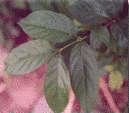 Common names: Tartaraok (Tagalog); balitadham (Bisaya); Rangoon creeper,
Common names: Tartaraok (Tagalog); balitadham (Bisaya); Rangoon creeper,
Chinese honeysuckle, liane vermifuge.
Indications: Fruit (kernel) anthelmintic; leaves poultice for headache
Found in: In forest margins at low altitude, in gardensand backyards. Native to
Asian tropics and throughout Malaysian region.
Parts used: Fruits
Special precautions: Follow recommended dosage. Overdose causes hiccups.
Preparation:
Anti-helmintic
-The seeds are taken 2 hours after supper. If no worms are expelled, the dose may be repeated after one week. (Caution: Not to be given to children below 4 years old)
9.) Tsaang Gubat (Carmona retusa (Vahl) Masam.) Tsaang Gubat is a shrub that grows abundantly in the Philippines. In folkloric medicine, the leaves has been used as a disinfectant wash during child birth, as cure for diarrhea, as tea for general good heath and because Tsaang Gubathas high fluoride content, it is used as a mouth gargle for preventing tooth decay. Research and test now prove it’s efficacy as an herbal medicine. Aside from the traditional way of taking Tsaag Gubat, it is now available commercially in capsules, tablets and tea bags.
Tsaang Gubat is a shrub that grows abundantly in the Philippines. In folkloric medicine, the leaves has been used as a disinfectant wash during child birth, as cure for diarrhea, as tea for general good heath and because Tsaang Gubathas high fluoride content, it is used as a mouth gargle for preventing tooth decay. Research and test now prove it’s efficacy as an herbal medicine. Aside from the traditional way of taking Tsaag Gubat, it is now available commercially in capsules, tablets and tea bags.
Common names: Putputai (Bikol); alangit (Bisaya); forest tea, wild tea.
Indications: pills, leaf decoction for gastroenteritis; as gargle to prevent cavities
Found in:In secondary forests at low and medium altitudes. Sometimes cultivated
as ornamentals.
Parts used:Leaves
Preparation:
Diarrhea
– Boil chopped leaves into 2 glasses of water for 15 minutes. Divide decoction into 4 parts. Drink 1 part every 3 hours
Stomachache
– Boil chopped leaves in 1 glass of water for 15 minutes. Cool and strain.
10.) Ampalaya (Momordica charantia (L.) DC)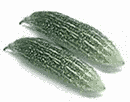
Ampalaya has been for used even by the Chinese for centuries. The effectively of Ampalayaas an herbal medicine has been tried and tested by many research clinics and laboratories worldwide. In the Philippines, the Department of Health has endorsed Ampalaya as an alternative medicine to help alleviate various ailments
Common names: Ampalaya (Tagalog); paria (Ilokano); palia (Bisaya); bitter gourd,
bitter cucumber, bitter melon (English)
Indications: lowers blood sugar levels
Found in: In lowland rain forest, thickets, hedges, waste places, and roadsides.
Parts used: Young leaves
Special precautions: Blood sugar levels should be monitored regularly. The native
variety with small bitter fruit is recommended
Preparation:
Diabetes Mellitus (Mild non-insulin dependent)
– Chopped leaves then boil in a glass of water for 15 minutes. Do not cover. Cool and strain. Take 1/3 cup 3 times a day after meals.
Here is a summary of these 10 amazing herbal medicines, their purpose, and how to prepare them. We hope that it comes in handy when you have access to these herbs.
| Herbal Medicine | Purpose | Preparation |
|---|---|---|
| Lagundi | Diuretic Anti-allergy Antioxidant Promotes relaxation Wound healing Improves digestion, Reduces risk of cancer | Decoction (the process of boiling the leaves or other parts of a fruit/plant in a couple of glasses of water for 15 minutes). Pounded using a pestle and mortar and can be applied to affected areas where there is pain, or soreness. |
| Ulasimang Bato | Gout Rheumatic pains | Infusion Decoction Eaten as salad |
| Guava | Anti-diarrheal Antiseptic (wound healing) | Decoction Fruit can be eaten |
| Garlic | Lowering blood cholesterol levels Antiseptic Hypertension Toothache Weight loss Immune booster | Infused with other herbs or honey Pounded and applied to affected areas (external use only) Cooked or eaten raw |
| Yerba Buena | Pain Cough Colds Nausea Pruritus | Decoction Crushing and extracting the sap Steeping |
| Sambong | Diuretic Hypertension Antipyretic | Infused and made as tea Crushed and applied when there is fever |
| Akapulko | Anti-fungal | Leaves crushed and applied to affected area |
| Niyog-niyogan | Anthelmintic | Can be eaten (seeds) |
| Tsaang Gubat | Stomach upset Diarrhea | Drink as tea |
| Ampalaya | Lowers blood sugar levels | Fruit can be eaten (cooked or raw) |
There you go, the 10 Herbal Medicines approved by the DOH. Although these are all-natural herbal medications approved by the Department of Health, it’s still best to advise our patients or clients to consult a physician or visit a clinic whenever possible


![10 Philippines Herbal Medicine Approved by DOH [Updates] 1 10 herbal medicines approved by doh](https://rnspeak.com/wp-content/uploads/2018/01/10-herbal-medicines-approved-by-doh.jpg)
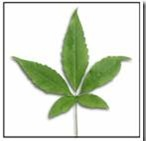
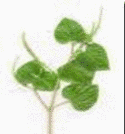





Thank you for this information regarding Philippine herbal medicinal plants. It is valuable and of great help to the average Filipino family who cannot afford to buy expensive pharmaceutical medicine.
Thank you!
thanks for caring.. this is amazing ..
Life is important.
thanks for caring.. this is amazing ..
Life is important.
Ty
Thank you for posting
Thank you for the information. This is so helpful to every Filipinos.
aus lng nmn malaking tulong ito sa mga mag-aaral na gaya ko…..
alternative medicine is a great alternative to traditional medicine. I think the two really complement each other. ”
I do not even know how I ended up here, however I thought this submit was good. I do not recognize who you are however certainly you’re going to a well-known blogger should you are not already. Cheers!
Hello, thank you so much for your compliment. I’m new to writing articles but aspiring to be excellent at it someday.